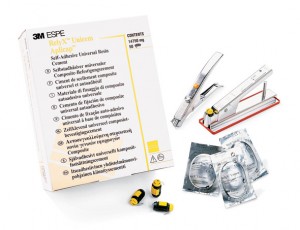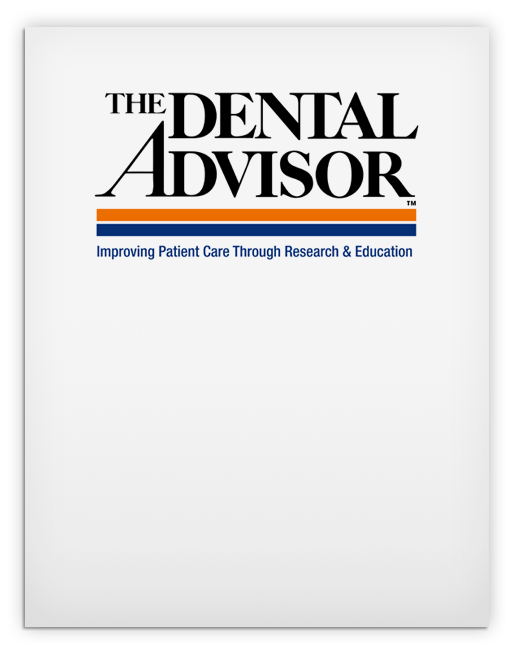Clinical Evaluations
3M ESPE RelyX Unicem Self-Adhesive Universal Resin Cement (4 yr)
Consultants’ Comments
- “After four years of use, RelyX Unicem continues to be the most widely used cement in our office.”
- “Simple cement for fiber posts.”
- “Very few debonds.”
- “Reliable cement.”
- “Very mild cement regarding sensitivity at cementation.”
- “Remove excess cement before it is fully set.”
Description
3M ESPE RelyX Unicem Self-Adhesive Universal Resin Cement is an encapsulated, dual-cured resin cement. It is selfadhesive, requiring no tooth surface preparation such as etching or priming. The cement is filled 72% by weight and contains fluoride. RelyX Unicem is available in two capsule sizes (Aplicap and Maxicap) in shades A1, A2, A3-opaque, white opaque, and translucent. It is indicated for the cementation of metal, PFM, ceramic and laboratory composite crowns, bridges, inlays, onlays, and metal or fiber posts. It is not recommended for the cementation of veneers. Working time is two minutes for the Aplicaps and 2.5 minutes for the larger Maxicaps. The Aplicaps have enough material to cement one to two restorations, whereas the Maxicaps have enough material for three to five restorations. This product received a 98% clinical rating.
Clinical Evaluation Protocol
- More than 4,400 restorations have been cemented with RelyX Unicem over the past four years. These include all-ceramic inlays, onlays, crowns, bridges; PFM crowns and bridges; and posts (Figure 1).
- 1,560 restorations were available for recall.
- 230 of the recalled restorations were cemented for four years.
- Categories evaluated at recall include:
- Postoperative sensitivity
- Microleakage
- Debonding
Figure 1

Clinical Observations
Postoperative Sensitivity
Since its introduction and subsequent monitoring over a four-year period, RelyX Unicem has had few reports of postoperative sensitivity. At four-year recall, 1.8% of patients reported occasional temperature sensitivity (Figure 2). Factors such as less manipulation of the prepared tooth and fewer steps for cementation may contribute to the low incidence of postoperative sensitivity.
Microleakage
Of the 1,560 restorations recalled, 4.2% had evidence of microleakage (Figure 2). One percent of the 1,560 restorations required replacement. Microleakage is exhibited by graying margins of all-ceramic restorations, resulting from improper isolation or improper pretreatment of the restoration. Microleakage can also result from excessive bruxism, causing compromise of the bond at the cervical margin and allowing the ingress of fluid and bacteria. The microleakage rate of restorations cemented with RelyX Unicem is comparable to restorations cemented with a 5th-generation bonding agent and corresponding light- or dual-cured resin cement.
Debonding
A low debonding rate was documented over the four-year evaluation period. In over 4,400 restorations cemented with RelyX Unicem, 32 (0.7%) required re-cementation (Figure 2). These included 18 ceramic onlays, nine ceramic crowns, and five PFM crowns. Of the 18 ceramic onlays that debonded, 10 had little direct retention. In four of these debonding cases, a portion of the tooth fractured.
Figure 2

Summary
RelyX Unicem has proven to be an excellent and reliable self-adhesive resin cement in the four years since its introduction.


